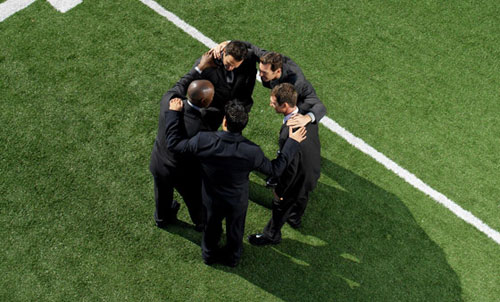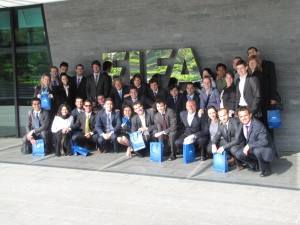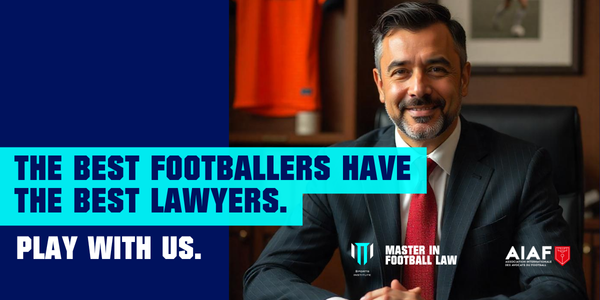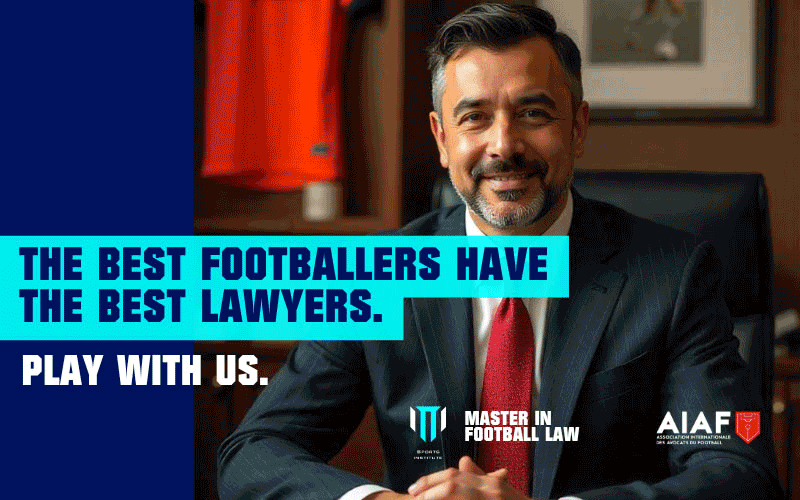THE TRAINING COMPENSATION SYSTEM

THE TRAINING COMPENSATION SYSTEM

Marco Cusumano · Lawyer · Lafferabogados
1. Concept of TC and its actual implementation.
The training and development of young players is fundamental in the world of football. In fact, the considerable social importance of sporting activities and in particular football, legitimates the objective of encouraging the recruitment and training of young players. This approach and recognition of fundamental importance was explicitly confirmed also in the European Union context, in connection with the case Olympique Lyonnais SASP v Olivier Bernard and Newcastle UFC (the so called “Bernard case”)1 . The importance of developing young players is reflected in the FIFA Regulation on the Status and Transfer of Players (hereinafter indicated as “RSTP”) and, in particular, in the detailed system created for the payment of TC2. The rationale for FIFA’s training compensation system is to ensure that training clubs are adequately rewarded for the efforts and costs they have invested in training their young players. This concept contributes to what is often referred to as the “trickle down” effect, namely that compensation is distributed from the top of the football pyramid to the very bottom. The suggestion is that this helps maintain the competitive balance between
1 European Court of Justice (hereinafter referred as “ECJ”) 16 March 2010, C-325/08. Briefly, in this case, the ECJ ruled that a scheme that provided for the payment of compensation was a prima facie restriction of the freedom of movement enshrined in Article 45 of the Treaty on the Functioning of the European Union (formerly Article 39), though it could in principle be justified by the objective of encouraging the recruitment and training of young players. In the case in question, which concerned the compensation rules implemented in France at the time, the ECJ ruled that the particular scheme in place went beyond what was proportionate to achieve the legitimate aim of compensation. The corollary of that decision is that provisions of national law must not require payment of sums that are in excess of the actual training costs incurred upon termination or expiry of a contract.
[two_third]
[box type=»shadow» align=»aligncenter» ]
[one_half]

[/one_half]
[one_half_last]
Master International Sports Law
www.isdemasters.com
Your gateway to the Worldwide Sports Law Industry
[/one_half_last]
[/box]
[/two_third]
2 The “new” RSTP entered into force on 1th September 2001 afterwards an intensive discussion held, both on a political and legal level, between FIFA/UEFA and the European Commission in order to find solutions acceptable for everybody regarding the international transfer system of football players. In March 2001 an agreement was finally found between the aforementioned parties on the principles that should govern the future international rules. At this regard, were established principles like the maintenance of contractual stability, protection of minors, solidarity mechanism and training compensation.
clubs and allows them to continue training and developing players in the knowledge that they will be adequately compensated for their efforts.
Regarding the functioning of this compensation mechanism, in accordance with Article 20 of the FIFA RSTP and Annex 4 thereto, training compensation is paid to a player’s training club or clubs whenever he signs his first contract as a professional and, thereafter, each time he is transferred as a professional until the end of the season of his 23rd birthday. Specifically, the FIFA Regulations provides that training compensation shall be payable, as a general rule, up to the age of 23. However the relevant entitlement is limited to the training period incurred up to the age of 21, unless it is evident that the player terminated his training period before this age, in which case, compensation is limited to the period between 12 and when the player’s training effectively terminated3 4. On first registration as a professional, the club with which he is registered is responsible to pay TC to every club that has contributed to his training, pro rata according to the period spent with each club. For subsequent transfers, TC is owed to his former club only for the time he was effectively trained by that club. In order to facilitate the calculation of the amount of TC due, the training costs are
3 The club that needs to pay compensation carries the burden of proof with regard to the alleged premature termination of the training period. Furthermore, the term “evident” indicates that such circumstances should only be considered to have occurred if absolutely clear indications do not leave space for another conclusion. In particular, the signing of a first professional contract alone does not automatically mean that the training period has been completed. See e.g. CAS 2003/O/527 Hamburger Sport-Verein v. Odense Boldklub; CAS 2004/A/594 Hapoel Beer-Sheva v. Real Racing Club de Santander S.A.D.; CAS 2006/A/1029 Maccabi Haifa F.C. v. Real Racing Santander.
4 Training compensation is on the other hand not due whenever the former club has breached a contract with the player without just cause. A club that has terminated a contract with a player without being entitled to do so shall not be rewarded for this attitude. Furthermore, no training compensation is due when the player transfers to a category 4 club, i.e. a club on the lowest level in the categorisation ladder of clubs with respect to the training compensation as the majority are purely amateur clubs. Lastly, no training compensation is due also if the player reacquires amateur status when he is transferred to a new club.
not calculated for each individual club. Instead, all clubs are to be classified in one of four categories by the association with which they are affiliated, according to their financial investment in training players, and the training costs are determined at confederation level for each category. The training costs set for each category correspond to the amount needed to train one player for one year multiplied by an average “player factor”, that is the ratio of players who need to be trained to produce one professional player. The calculation takes account of the costs that would have been incurred by the new club if it had trained the player itself, thus it depends on the amount of money the clubs invest in training and on the quality of the training offered to young players. The scale ranges from high-quality training academies down to amateur club centres. In general, the first time a player registers as a professional, TC is calculated multiplying the training costs of the new club by the number of years of training that the player received from the former training club(s)5. Finally, a loan of a player to another club, as will be discussed below, is subject to the same rules applying to the transfer of players, including the provisions on training compensation.
5 However, for players moving within the European Union or the Economic Area there are special provisions: if a player moves from a lower to a higher category club inside the territory, the calculation shall be based on the average training costs of the two clubs; on the contrary, if he moves from a higher to a lower category, the calculation is based on the training costs of the lower category club.
2. The relationship between the concept of training compensation and the system of player loans – Key case law.
The concept of TC and the system of player loans are both aspects of the football pyramid that should operate in a complementary manner. In fact, article 10.1 of RSTP provides as follows: “A Professional may be loaned to another club on the basis of a written agreement between him and the clubs concerned. Any such loan is subject to the same rules as apply to the transfer of players, including the provisions on training compensation […]”. In other words, the club receiving a player on loan is entitled to claim TC for the time the player remained with it and it can claim TC if the player transfers to a third club provided the player is younger than 23. At this respect, the rationale on applying the TC mechanism to the system of player loans is an important aspect of football’s infrastructure and is one of the foremost ways in which the skills and development of a young player can be enhanced. In fact, clubs at all levels expend considerable resources training and educating their young players who are, in effect, custodians of the club’s future sporting performance and/or valuable assets in the transfer market. Of particular importance to such development is the system of player loans. Some players who find that they are not in the manager’s immediate plans go out on loan so that they can play competitive football regularly. For another group of players, loans allow football clubs to address the gap in talent and experience between their development squads and their first team squads. Younger players can go on loan to gain
experience in a foreign or lower league which will ultimately prove beneficial for all parties involved: the player is provided with the opportunity of competitive football, the loanee club is able to derive benefit from the player’s ability and the parent club hopes that the loan will prove an experience for the player through which his skills can be developed. To understand the relation between the concept of TC and the system of player loans, it is necessary to have a look to the case law of the football disputes resolution bodies in charge to assess the TC cases, that are FIFA Dispute Resolution Chamber (hereinafter referred as “DRC”) and the Court of Arbitration for Sport (hereinafter “CAS”).
The jurisprudence of the football disputes resolution bodies, in cases concerning loans of players, has been consistent over the years in taking into account the rationale of the TC and that it should be payable for the entire period a club trains a player.
– CAS 2012/A/2908 Panionios GSS FC v Paraná Clube:
It is worth mentioning a decision of CAS in Panionios GSS FC v Paraná Clube case (hereinafter “Panionios case”), which, instead, has casted doubts on the relationship between the two systems and appears to suggest that, when a player is loaned by a training club to another club, the training club does not have the right to claim TC for any training and education it has provided before the loan takes place. This decision could have serious negative consequences for training clubs. CAS stated that its decision in this case follows the precedent set in Feyenoord Rotterdam v. Club de Regatas do Flamengo (hereinafter
“Feyenoord case”)6. However, in my opinion and as described below, the Panionios case is distinguishable from the Feyenoord case and the latter, in any event, it is contrary to the consistent jurisprudence of the DRC. From the perspective of TC, in reaching its decision in the Panionios case CAS ruled that: “[…] the question to be answered in this appeal and in the context of the interpretation of Annexe 4 Article 3.1 of the FIFA RSTP is whether the calculation of the training compensation owed to Paraná should be made in relation to the entire period in which the Player was registered with Paraná, before and after the loan to Iguaçu or whether the loan to Iguaçu has an impact on the period in a way that this loan actually reduced the period to be taken into consideration only to the last cycle i.e. the last period in which the Player was registered with Paraná after he returned from the loan period to Iguaçu. […] Therefore the Panel can only understand the above mentioned rule in the sense of considering Panionios liable to pay the training compensation to Paraná (as the former club who has previously trained the Player) only for the period during which the Player was registered with Paraná after the loan to Iguaçu”7. CAS therefore ruled that Paraná was not entitled to TC for the period during which it trained and educated the Player before he was loaned to Iguaçu. The compensation to which Paraná was entitled was limited to the period after the loan. In short, this decision would suggest that a loan interrupts
6 CAS 2007/A/1320-1321 Feyenoord Rotterdam v. Clube de Regatas do Flamengo.
7 CAS 2012/A/2908 Panionios GSS FC v. Paraná Clube, para. 165 – 167.
a training club’s entitlement to TC. It has to be highlighted that this decision cannot be right for a number of reasons. Firstly, the RSTP do not provides that by loaning a player, a club loses its entitlement to TC. Instead, the Regulations provide that a training club is entitled to TC for the entire period it has provided the player with training and education. There seems no practical reason for a club to lose entitlement to TC as a result of its decision to loan a player. Secondly, as it was pointed out above, exist consistent jurisprudence of the DRC that provides for a period of loan to be excluded from the calculation because the training club is entitled to compensation only for the period in which it has actually provided the player with training8. These cases were not considered by CAS. Thirdly, the CAS bases its decision in part on the decision of the Feyenoord case, in which CAS stated is authority for the proposition that TC should be payable to the training club for the period of the last cycle of registration with that club. However, that case did not concern the application of TC to a loan scenario, but rather to a scenario of sequential permanent transfers. In that case, CAS established the “segmentation” principle, whereby TC is payable only in respect of the segment of time immediately preceding a player’s permanent transfer to and registration with a new club. It is not in doubt that a permanent transfer interrupts the chain in respect of TC but, as per the FIFA RSTP and jurisprudence, this principle should differ in respect of loans. If it were correct that a loan prevented a training club from claiming TC for
8 The cases of the FIFA DRC in decisions nº 5101080 (6th May 2010), nº 910192 (29th September 2010), nº 3121474 (1st March 2012) and nº 8122321 (17th August 2012) are all authorities for this position.
the period before a loan, training clubs would be discouraged from loaning their young players to other clubs as they would lose out significant sums that could be necessary to face, moreover, the financial fair play. Further, the logical corollary of the loan breaking the chain for TC would be that the club taking the player on loan should be obliged to pay to the training club and, in turn, the loanee club would be entitled to receive TC from the loaner after the player returns. As a consequence, the training club, again, may be discouraged from loaning a player if it knows that it will then become liable to the loanee club for additional compensation. The CAS award in the Panionios case is thus a surprising decision, especially given its conflict with the principles of the RSTP. It is respectfully suggested that this decision is not a consequence of the Feyenoord case but is a decision that should be confined to the facts of that case and not followed. After few months, indeed, CAS rendered a different decision in the case Dundee United FC v. C. A. Velez Sarsfield (hereinafter “Dundee case”) that appears to provide an alternative view on the interaction between the systems of loans and TC, reaching a conclusion contrary to what was established in the Panionios case.
– CAS 2013/A/3119 Dundee United FC v. C. A. Vélez Sarsfield:
The decision at stake, represents a better interpretation of the RSTP given that it recognises the interconnected importance of the systems of loans and TC to the development and education of young footballers. In this case CAS upheld and approved the DRC’s decision, in which was
stated the following: “[…] the Chamber, stressed that one of the aims of the last sentence of art. 10 par. 1 of the Regulations is to ensure that training clubs which register a player on a loan basis also benefit from the solidarity mechanism and training compensation, provided that the relevant prerequisites in the pertinent provisions of the [RSTP] are fulfilled. This approach is also in line with the Chamber’s well-established jurisprudence that all clubs which have in actual fact contributed to the training and education of a player as from the age of 12 until the age of 21 are, in principle, entitled to training compensation for the timeframe that the player was effectively trained by them. In this respect, the Chamber deemed it at this point essential to emphasise that, as to the liability to pay training compensation, the analogy established in art. 10 par. 1 of the [FIFA RSTP] could not be extended to the case in which a player is loaned to a club and thus is not being definitely transferred to the latter club. In other words, the transfer of a player from the club of origin to the club that accepts the player on loan, as well as the return of the player from the club that accepted him on loan to the club or origin, do not constitute a “Subsequent transfer” in the sense of art. 3 par. 1 sent. 3 of Annex 4 of the [FIFA RSTP]. The Chamber was eager to point out that it could not have been the intention of the legislator of the relevant regulatory provision (i.e. art. 10 par. 1 of the [RSTP]) to trigger the consequences of art. 3 par. 1 of Annex 4 of the [RSTP] on the occasion of a transfer on a loan basis and, thus, potentially deprive the loan of its essential flexibility and, in connection with the training and education of player, its purpose of providing young players with the opportunity to gain practical experience in official matches for another club in order to develop in a positive way. […] Hence, the Chamber came to the firm conclusion that for the purposes of the provisions of the [RSTP] governing training compensation, the loan of a young player from his club of origin to other clubs does not interrupt the ongoing training period of the player and the obligation to pay training compensation arises only in case a player is transferred on a definitive basis, with the effect that, at that moment, the club which transferred the player on a loan basis to another club is entitled to training compensation for the entire period of time during which it effectively trained the player, however, excluding the period of time of the loan”. It was therefore CAS’s view that a club is entitled to TC for the entire period in which it provided effective training and education to the player, save for any time spent by that player on loan at another club (i.e. when the parent club was not providing the player with training and education). The Court considered that the loan of a player does not interrupt the chain of transfers and a training club will in effect be entitled to the payment of TC for the periods both before and after the loan of a player. It has to be highlighted that CAS’s decision in Dundee case is preferable to the conclusion on the interpretation of the RSTP reached by the Panel in Panionios case. First, and contrary to the position adopted in the precedent case, the Panel’s decision follows DRC jurisprudence, which is authority for the proposition that a loan does not interrupt a training club’s entitlement to TC. Second, CAS’s decision shows a nuanced appreciation of the interaction between the systems of TC and loans. It expressly acknowledges that the intention behind the RSTP is to encourage the recruitment and training of young players. The practical conclusion to draw from its decision is that the systems of TC and loans should be complementary, not mutually exclusive. In this respect, the CAS stated that: “The Panel also finds that this conclusion is consistent with the actual rationale of the training compensation system, which is to encourage the recruitment and training of young players. To hold that the loan of a player would interrupt the training period could, in the opinion of the Panel, deter training clubs from loaning players. It occurs frequently in the world of football that young players are not proficient enough for the first team, or to give these players a chance to train and play in order to try and reach the required level to play for the first team, a solution regularly used is to loan the player concerned to another team in order for the player to gain experience with another club and to prepare him or give him the chance to reach the requisite professional level for playing in the first team of the training club. However, if the making of such loan would entail the consequence that the training club would thereby waive its entitlement to training compensation, the training club might decide not to loan the player to another club merely in order to secure its entitlement to training compensation. In such a situation, the player would be deprived from the very training considered to be the most suitable for him. The Panelwould regard such a situation as undesirable, and endorses the view of the DRC insofar it argued that any other interpretation of the RSTP would potentially deprive young players of the opportunity to gain practical experience in official matches for another club in order to develop his footballing skills in a positive way”. With respect to the decision reached in Panionios case, my point of view is that the decision in Dundee case should prevailed as an explanation of the mechanics of the Regulations concerning the interaction between TC and the loan system. Both systems must work together to promote the development of young players. The financial considerations that result from the application of the TC regime should not therefore inhibit a club’s desire to loan young players in order to enhance their development.
3. Attempts to circumvent TC system – Key case law.
Every now and then clubs, even renowned and wealthy ones, are tempted to avoid the payment of TC by, for example, conducting rapid consecutive transfers, called as «bridge transfers» where the player will never be fielded by the bridge club, who loans or sells the athlete to the true transferee9. CAS and DRC, have generally disapproved such behaviours, outlining with their decision the circumstances under which it has to be considered justified to command to the purchasing club to compensate the training club(s) of a player. In order to find out these
9 In its press release FIFA defined: “In general, bridge transfers involve clubs collaborating to transfers players through a “bridge” club to a destination club where the player was never fielded by the bridge club”. Therefore to conduct a bridge transfer is to interpose a third club in the pathway of a regular transfer to achieve other objectives (as circumvent training compensation system) apart from the transfer itself.
circumstances, below will be examined a landmarks ruling by CAS and the DRC in cases concerning attempts by clubs to circumvent the payment of training compensation.
– CAS 2009/A/1757 MTK Budapest v. FC Internazionale Milano:
This is the first most famous circumvention case. The Italian club Internazionale Milano (hereinafter “Inter”) was interested in a young player from MTK Budapest (“MTK”) but no agreement was reached. As a consequence, the player, still an amateur, decided to accept a first contract with a Maltese club, where he stayed only 9 days before being subsequently transferred to Inter. Therefore, MTK filed a claim directly against Inter for the payment of the TC. Afterwards the proceeding before the DRC took place10, MTK appealed the decision to CAS. The Panel deemed that MTK was entitled to receive TC for having trained the athlete. With regard to Inter’s liability to pay remuneration, the reasoning of the CAS was rather brief. The Panel noted that since it was Inter that has benefited from the training efforts invested by MTK, it was Inter that should be obliged to pay a higher TC amount, based on the Italian club’s category instead of the Maltese. The panel also found difficult to understand the player’s “unusual pattern of movement” and it pointed out the following: “[…] it is difficult to understand why a player who is rated highly and who has captained the Hungarian under 19 team and who has attracted the attention of Inter Milan should elect to move to a club in Malta and stay there for little more than a week before
10 FIFA DRC decision nº 108806 (31st October 2008).
moving on to Italy». Therefore, despite MTK was not the direct former club of the player before his transfer to Inter, the latter was, contrary to what is established in the FIFA RSTP art. 3 par. 1 sent. 3 of Annex 4, ordered to pay training compensation to the Hungarian club.
– FIFA DRC decision nº 0213936 (27th February 2013):
The following matter adjudicated by the DRC is another straightforward circumvention case. The player, born in 1989, was registered with the Claimant as from 10 March 2008 until 15 November 2011 as a professional. On 1 February 2012, a category 4 club F requested the player’s ITC from the Claimant. Four days later, the Respondent, a category 2 club, requested the ITC from F. The player did not play a single match or participate in any of the trainings of F. The Claimant thus concluded that the Respondent tried to circumvent the payment of TC and lodged a claim before FIFA. The DRC underlined that the employment contract between F and the player had been terminated after only four days. Moreover, just on the following day the Respondent had concluded an employment contract with the athlete. The Chamber also noted that according to the Respondent’s website, the player was included in the list of players that were attending the training camp in January 2012. As a consequence, the DRC paid attention to the abnormal sequence of transfers as follows: «[…] nor did the Respondent provide an explanation why the player had moved from a club (from country R) playing in the 1 league in country R to a club from country X participating in the 3 league in country X for only 4 days, before transferring to a club participating in the 1 league in the country M”. The Chamber concluded that the player had in fact already joined the Respondent prior to his registration with F. Therefore DRC considered that the Respondent tried to avoid TC and ordered it to pay to the Claimant the relative amount.
In the light of the jurisprudence of DRC and CAS11, it is possible to point out what circumstances are likely to be taken into account by these dispute resolution bodies in determining whether there has been unlawful circumvention of the TC. The tribunals will, as a main rule, adhere to the language of the RSTP and refrain from extending the scope of Annexe 4, Article 3.1, and in particular have made clear that in the case of subsequent transfers of a professional player, TC will only be owed to his former club. However, in the interest of sporting justice and to ensure that clubs are not using such techniques as shams to purposefully avoiding paying TC, the CAS and the DRC have demonstrated that they will not hesitate to look behind a transfer to determine whether it is actually a device to circumvent TC. The following factors, when substantiated with solid evidence, have been interpreted by CAS and DRC as indications of an attempt to avoid the payment of TC and have been sufficient to satisfy the tribunals in the past: 1) Short visits to the lower category clubs. In the aforementioned cases, the stops lasted from only 4 to 9 days. 2) No matches (and no practicing) for the intermediate clubs. As shown above, none of the athletes had
11 See also DRC decision nº 7101140 (22 July 2010) and DRC decision n. 10131359 (31 October 2013) played for the lower level club in a match before ascending to the higher level club. 3) An existing contact between the player and the final club before the series of transfers. In the two the examined cases, the destination club had been in a direct contact with the athlete before the initial transfer. 4) An unusual sequence of transfers without any rational explanation. The absence of any sensible reason for a talented player attracting grand clubs to move to a second tier team before an immediate rise was observed in all cases examined.
4. Waiving training compensation.
It is possible for a club to waive its right to TC and it is vitally important for clubs who seek to rely on TC being waived to fully understand the legal requirements to ensure that a waiver is fully enforceable. It is also equally important for clubs who do not intend to waive their right to TC to ensure that they do not inadvertently do so. According to jurisprudence of DRC a waiver can only be applied if it is “unmistakeable that the renouncing club had indeed intended to waive its right to training compensation”12. Below will be mentioned in brief the most remarkable cases involving disputes between clubs of different associations where the DRC and CAS have had to determine whether a club has indeed waived its right to training compensation.
– FIFA DRC decision nº 114461 (4th November 2004) / CAS 2005/A/811 Galatasaray SK v. MSV Duisburg:
12 C.f. FIFA DRC decision n. 67516 (8th June 2007), para. 10.
In this case, a declaration from the training club that no more transfer fees are payable has been deemed not to be a waiver by DRC and also by CAS. In fact, Galatasaray claimed that it did not have to pay TC because the player’s training club, MSV Duisburg, signed a document addressed to the player confirming “that the contract of (the player) expires on 30 June 2002 and that no more transfer fees exist”. MSV Duisburg maintained that it did not waive its right to TC but only confirmed that no transfer fee was payable as the player’s contract had expired. The DRC agreed and held that the document was not a waiver because no specific reference was made to TC. The case was subsequently appealed to the CAS who upheld the DRC decision. The CAS held that all the circumstances of the case led to TC being due and that Galatasaray should have understood that the document only related to transfer fees or at least should have clarified this point with MSV Duisburg, particularly as the document was not addressed to the player and not to them.
However, whilst DRC and CAS jurisprudence suggests that a waiver will not be enforceable unless there is a specific reference to TC being waived13, clubs who do not intend to waive their entitlement to training compensation should be very careful of entering into agreements or signing documents with general and wide ranging clauses or declarations as they could amount to a waiver.
13 At this regard see also FIFA DRC decision nº 9112744 (7th September 2011) and CAS 2009/A/1919 Club Salernitana Calcio 1919 v. C.A. River Plate & Brian Cesar Costa.
– FIFA DRC decision nº 106574 (26th October 2006):
In this case, a club claimed that the training club had waived its right to TC by confirming in a document signed by the club’s president that “it does not require any financial compensation for the footballer [A]”. In determining whether the term “financial compensation” referred to the training club’s right to receive TC, the DRC stressed that this term “encompassed any kind of monetary compensation”, thus also TC.
Clubs should also be careful in ensuring that any forms required by national associations when completing transfers are completed correctly14. Often, clubs who claim TC are small clubs with limited resources and thus this issue is particularly important for such clubs who rely heavily on recovering TC for their players. Finally, it has to be highlighted that, as a general rule, only the club with the entitlement to TC can waive this right. Therefore, neither the player nor the agent could enter in an agreement with a third club in which waive the TC that pertain to the training club15. However, clubs should be careful also that their employees do not send out any documentation which could inadvertently waive their entitlement to training compensation. At this regard, the following case is a fitting example.
– FIFA DRC decision nº 412107 (26th April 2012):
In this matter, an individual, who was supposedly responsible for the training club’s team, sent a letter bearing the club’s letterhead to the
14 At this regard see FIFA DRC decision nº 9191245 (29th September 2010); In contrast to this decision FIFA DRC decision nº 44695 (8th June 2007).
15 At this regard see FIFA DRC decisions nº 86130b (17th August 2006) and nº 68836a (13th June 2008) and nº 510425 (21st May 2010).
player’s new club declaring that the player was a free agent and, therefore, free to sign a contract with the new club, free of payment. The new club claimed that the training club waived its entitlement to TC in this letter, whilst the latter deemed that the individual who sent the letter did not have authority to represent the club or make such a statement on its behalf. Finally, DRC concluded that the training club had waived its right to claim TC. The DRC emphasised the fact that the individual who signed the letter, which bore the training club’s letterhead, was an employee of the club and so the training club was vicariously liable for his actions. Also, according to DRC, the wording of the letter was “clear and unambiguous” and it could be “assumed in good faith that, based on such wording, no payment whatsoever would have to be made for the transfer of the respective player, i.e. neither a payment of a transfer sum, nor of any other compensation, such as training compensation”. Therefore, it is important for clubs who intend to rely upon TC being waived to ensure that the document purporting to be a waiver is drafted very precisely with a specific reference to the entitlement to TC under Article 20 of RSTP being waived. It is also clear that only the training club can waive the right to TC and ideally the waiver should form part of an agreement between the two clubs. Parties should always seek legal advice before entering into any agreements or signing any documents of this nature to ensure that any purported waiver is enforceable and, equally, to avoid any compensation rights being inadvertently waived.
5. Conclusion.
As stated by the ECJ in the above mentioned Bernard case, the system of TC included in the FIFA RSTP pursues a legitimate aim and is justified by reason in the public interest16. In fact, considering the manifold and specific characteristic of football as well as of its uncontested social and educational function, it certainly lies in the public interest to have a system in place that aims at ensuring that small and relatively poor training clubs do not disappear. It is a reality, indeed, that large and vastly more wealthy clubs constantly try to attract young promising talents with contractual offers that the aforementioned small clubs will never be able to present to the players they have trained and educated. In conclusion, the prospect of receiving TC is likely to encourage football clubs to seek new talent and young players. Although sometimes TC could be to the detriment of the minority of young players who may face difficulties finding a club ready to pay for their TC, most of times it is to the benefit of the majority, since a large number of players would never be trained by a club if the clubs did not have the incentive of compensation for training players that move to another club during or at the end of their training period. Training compensation thus plays an important role in the development of young players and in maintaining the stability and integrity of the sport.
16 C.f. ECJ, 16 March 2010, C-325/08 Opinion of Advocate General Sharpston, point 47 and the references contained therein.
Bibliography – Jurisprudence
– European Sports Law and Policy Bulletin 2010, The Bernard Case – Sports and Training Compensation;
– FIFA Regulations on the Status and Transfer of Players (ed. 2015);
– FIFA Commentary on the Regulations on the Status and Transfer of Players (ed. 2005);
FIFA DRC
– Decision nº 114461 (4th November 2004);
– Decisions nº 86130b (17th August 2006);
– Decision nº 106574 (26th October 2006);
– Decision nº 44695 (8th June 2007);
– Decision n. 67516 (8th June 2007);
– Decision nº 68836a (13th June 2008);
– Decision nº 108806 (31st October 2008);
– Decision nº 5101080 (6th May 2010);
– Decision nº 510425 (21st May 2010);
– Decision nº 7101140 (22 July 2010);
– Decision nº 910192 (29th September 2010);
– Decision nº 9191245 (29th September 2010);
– Decision nº 9112744 (7th September 2011);
– Decision nº 3121474 (1st March 2012);
– Decision nº 412107 (26th April 2012);
– Decision nº 8122321 (17th August 2012);
– Decision nº 0213936 (27th February 2013);
– Decision n. 10131359 (31 October 2013);
CAS
– CAS 2003/O/527 Hamburger Sport-Verein v. Odense Boldklub;
– CAS 2004/A/594 Hapoel Beer-Sheva v. Real Racing Club de Santander S.A.D.;
P a g e 24 | 24
– CAS 2005/A/811 Galatasaray SK v. MSV Duisburg;
– CAS 2006/A/1029 Maccabi Haifa F.C. v. Real Racing Santander;
– CAS 2007/A/1320-1321 Feyenoord Rotterdam v. Clube de Regatas do Flamengo;
– CAS 2009/A/1757 MTK Budapest v. FC Internazionale Milano;
– CAS 2009/A/1919 Club Salernitana Calcio 1919 v. C.A. River Plate & Brian Cesar Costa;
– CAS 2012/A/2908 Panionios GSS FC v. Paraná Clube;
– CAS 2013/A/3119 Dundee United FC v. C. A. Vélez Sarsfield;
European Court of Justice
– ECJ, 16 March 2010, C-325/08 Olympique Lyonnais SASP v Olivier Bernard and Newcastle UFC;
– ECJ, 16 March 2010, C-325/08 Opinion of Advocate General Sharpston









